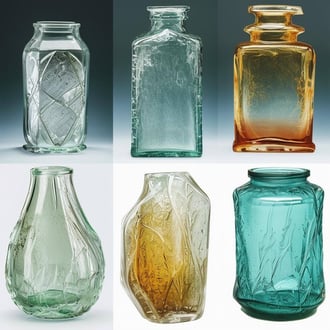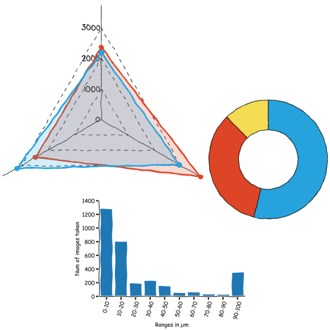Discover the capabilities of WaveMode AFM in characterizing bottlebrush polymers with unprecedented detail and speed, ...

The ultimate tool for nanoscale research from biological molecules to advanced new materials.
The versatile mid-range research AFM that grows with your demands in modes and accessories.
A compact affordable research AFM that is astoundingly easy to use, with more than 30 modes and options.
Fastest reliable sub-Angstrom surface roughness metrology.
Bringing the power of DriveAFM to a wafer metrology system purpose-built for the requirements of the semiconductor industry.
Measure roughness and other material properties of heavy and large samples up to 300 mm and 45 kg.
For unique requirements, we will design a bespoke AFM solution, leveraging our decades of engineering expertise.
Slide an AFM onto your upright optical microscope turret for a leap in resolution.
One of the smallest ever AFMs, created for integration into custom stages or existing setups.
A flexibly mountable research-grade scan head for integration into custom stages or existing set ups.
What is atomic force microscopy (AFM)? How does AFM work? What AFM modes do I really need? How do I get started with AFM?
Learn how AFM works with cantilever/tip assembly interacting with the sample. Explore CleanDrive technology, calibration methods, and feedback principles for precise nanoscale imaging.
An overview of common AFM modes. To learn about each mode in more detail and see application, view the full article.
We regularly publish detailed reviews providing practical guidance and theoretical background on various AFM applications.
Read detailed technical descriptions about selected AFM techniques and learn how to perform specific measurements on Nanosurf instruments.
A library of links to research papers in which Nanosurf instruments were used.
Learn AFM from our library of recorded webinars, covering different measurement techniques, modes, and areas of application.
Short video clips explaining how to perform different operations on Nanosurf instruments.
Watch a product demonstration to learn about the capabilities of our AFMs.
Short videos of our AFMs.
Browse news articles, press releases and a variety of other articles all around Nanosurf
Browse Héctor Corte-Léon's weekly experiments, for inspiration, entertainment, and to discover everyday applications of AFM.
A few months ago I shared with you a few images taken on my toothbrush. On them you can see the way I mount the fibers for AFM imaging, how a brand-new toothbrush looks like, and the amount of bacteria accumulated on a used toothbrush. (Yes, I push too hard when using the toothbrush).
From the images we conclude that the fiber material is likely to be Nylon, and that the bacteria are likely to be dried/collapsed gram-negative bacteria.
The information that was missing was how the toothbrush was stored and how it was cleaned/disinfected. The question that arises is how much the storage and disinfecting techniques can change the outcome of this experiment.
The information is that I used the toothbrush, rinse it in tap water, and then keep it in my bedroom in dry conditions, in the dark.
The question, is what we try to answer in this week fridayAFM. For this, I bought 2 new toothbrushes, one UV disinfection machine, and one bottle of mouthwash. In the first part, I expose a toothbrush to a number of UV-light sessions, and at regular intervals I take a fiber and inspect it with the AFM system.
According to the bibliography I had access to, Nylon (our best guess for the toothbrush fibers), should degrade significantly after 4h of UV-C exposure, with chunks of material falling off. However, we don't see such degradation here, meaning that either the material is not Nylon, the intensity of the UV light is not high enough, or the role of water (seawater to match the literature) is critical for the degradation to takes place.
On the second part of the experiment, I took a brand-new toothbrush, dip it in mouthtwash, keept it in the dark, and after two months I took it out, rinsed it with tap water and imaged it.
In this case, there is some minor pitting in the images, but most of the surface remains unaffected. What remains an incognita (hopefully you will have the answer), is which ingredient of the mouthwash produces this effect.
Mouthwash ingredients: Water (Aqua), Alcohol, Glycerin, Polysorbate 20, Flavour (Aroma), Citric Acid, Sodium Citrate, Sodium Hydroxide, Sodium Saccharin, Cetylpyridinium Chloride, Zinc Chloride, Sodium Fluoride, Colours (CI 42051, CI 16035), Contains 0.05% w/w Sodium Fluoride (225 ppm F).
As usual, this week fridayAFM answers some questions and opens others. In this case, this is a control experiment needed to be able to differentiate between different effects when trying different disinfection techniques. Will the UV exposure kill the bacteria? Does it need rinsing in mouthwash or is it tap water enough? Will the water, combined with the UV light degrade the fibers to the point that chunks of plastic drop?
Stay in touch, as we will try to answer these questions in future friday afternoon experiments.

28.10.2025
Discover the capabilities of WaveMode AFM in characterizing bottlebrush polymers with unprecedented detail and speed, ...

27.10.2025
Read this blog and discover advanced alloy engineering and cutting-edge AFM techniques for high-resolution, ...

14.10.2025
Discover how WaveMode technology resolves the tobacco mosaic virus structure under physiological conditions with ...

08.12.2024
Learn how to make a Python code to interface your AFM with a gamepad.

01.10.2024
FridayAFM: learn how the extreme sensitivity of AFM can reveal the glass ageing process.

11.07.2024
FridayAFM: learn how to perform datamining on large sets of AFM data.
Interested in learning more? If you have any questions, please reach out to us, and speak to an AFM expert.
